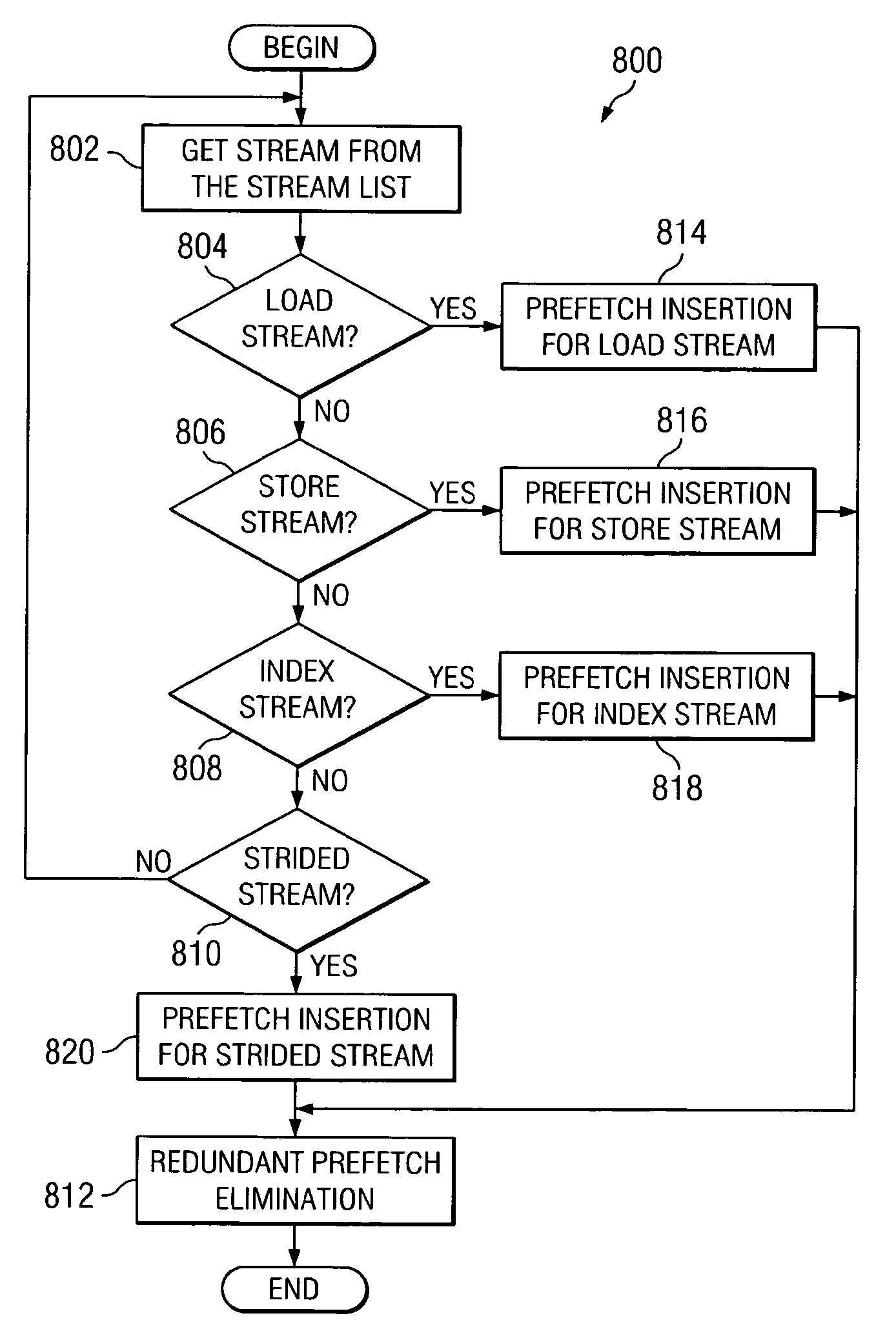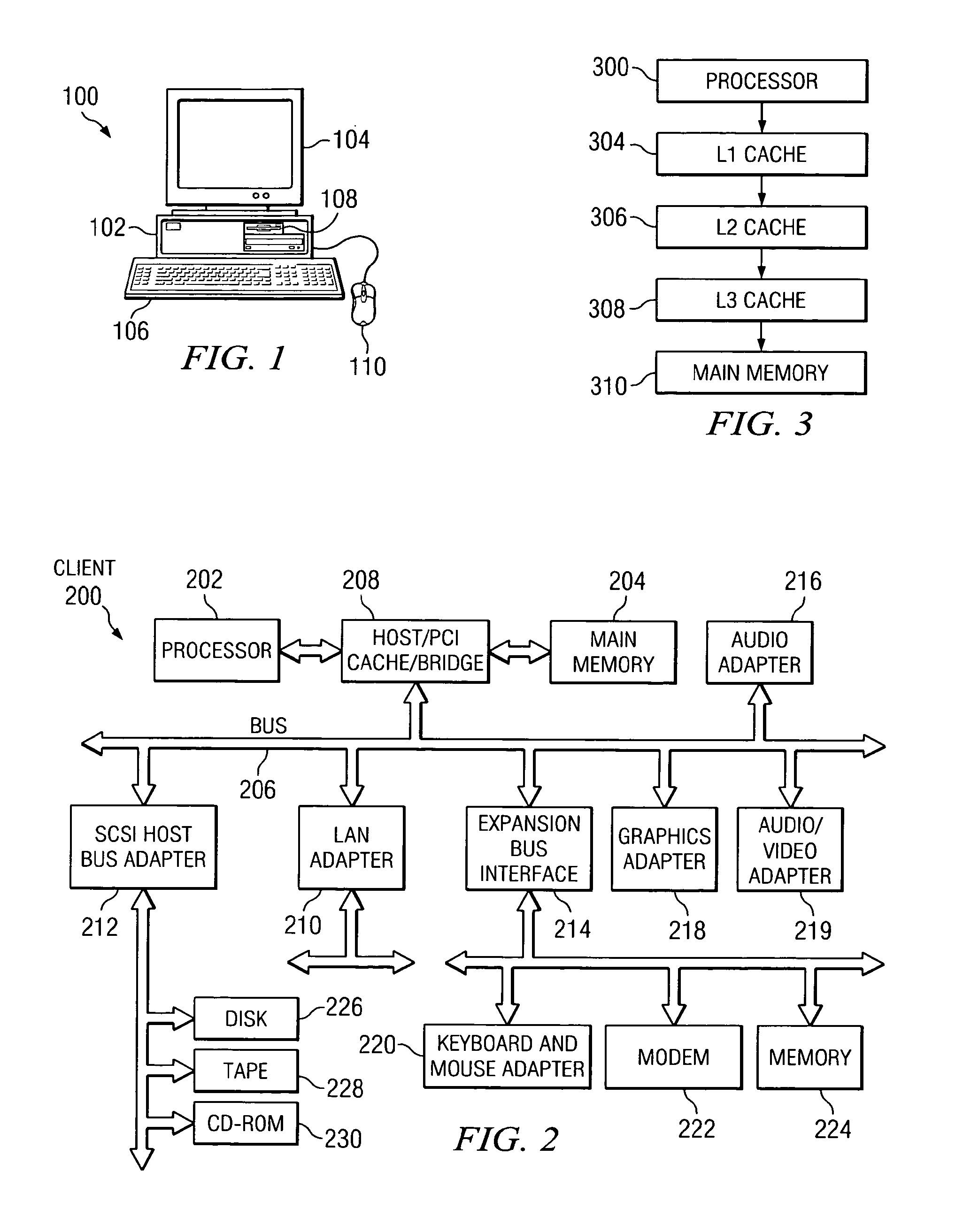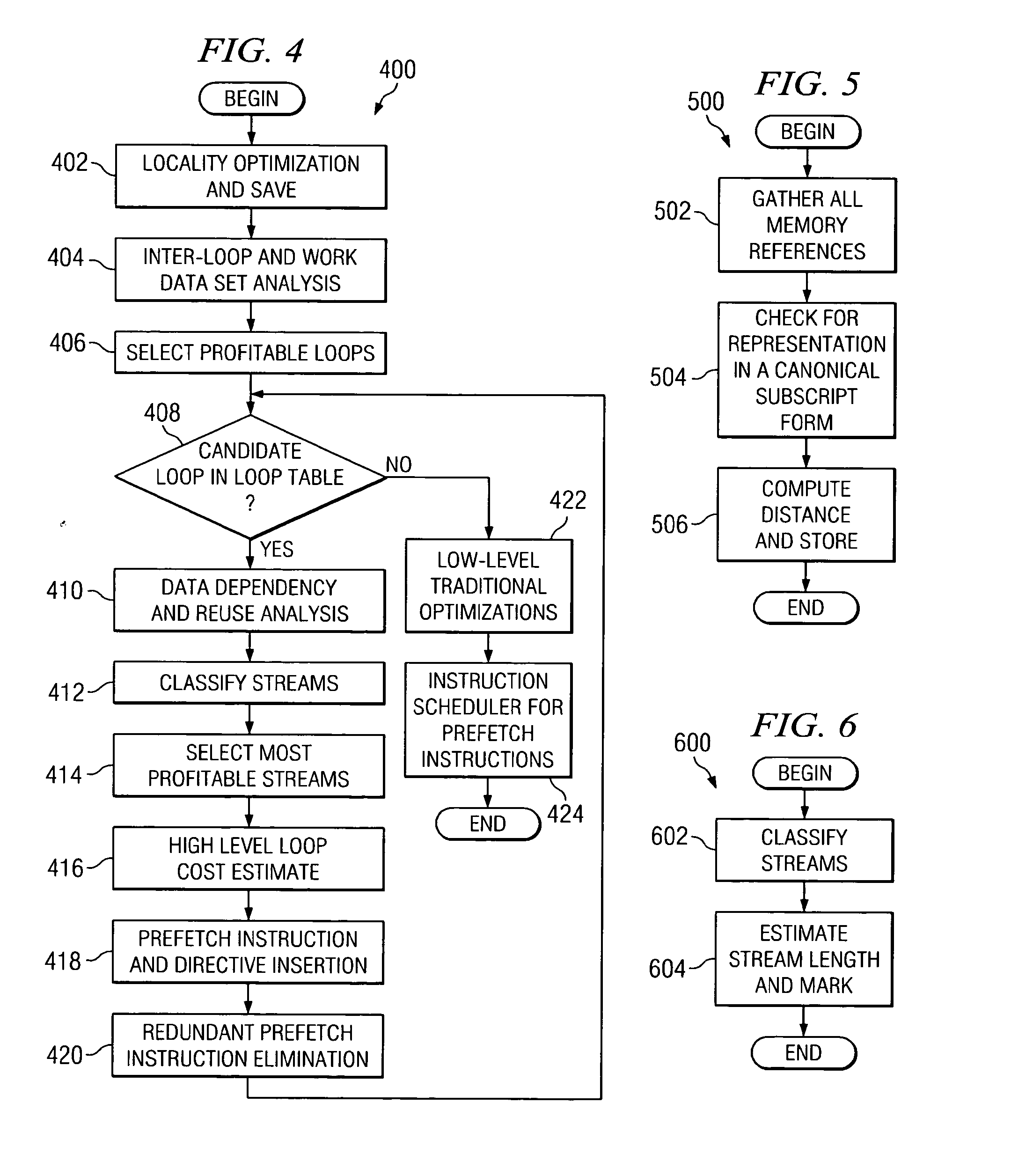Fine-Grained Software-Directed Data Prefetching Using Integrated High-Level and Low-Level Code Analysis Optimizations
a software directed data and optimization technology, applied in the field of fine-grained software directed data prefetching using integrated high-level and low-level code analysis and optimization, can solve the problems of hardware not prefetching the most profitable streams, less accurate than software prefetching, and adversely affecting the performance of applications on modern processors, so as to avoid cache pollution, eliminate redundant prefetching, and minimize effective memory latency without unnecessary cost
- Summary
- Abstract
- Description
- Claims
- Application Information
AI Technical Summary
Benefits of technology
Problems solved by technology
Method used
Image
Examples
example 1
Load / Store Stream
[0035]A stream is called an indexed stream if it is accessed indirectly through another load stream (e.g., b in Example 2).
int a[N];double b[N];for (i=01 1...= ... b[ a[i] + 8 ];}
example 2
Indexed Stream
[0036]A stream is called a strided stream if its stride is either unknown or a constant larger than L1 data cache line size. Based on static analysis and dynamic profile information, the stream length is estimated and streams are marked with limited or unlimited length (block 604). As the streams are identified into stream types, they are loaded into a stream table.
[0037]Turning now to FIG. 7, a flow diagram 700 illustrating the method of the stream selection process of block 414 in FIG. 4 is depicted in accordance with a preferred embodiment of the present invention. The most profitable streams are marked as protected until the number of protected streams reaches the number of hardware protected streams (block 702), based upon the high-level transformations, static analysis information and dynamic profile information gathered in blocks 402, 404, 406, 410, and 412 in FIG. 4.
[0038]Turning now to FIG. 8, a flow diagram 800 illustrating the method of the prefetching and d...
example 3
Length of a Stream Less than 1024 Cache Lines
[0040]In Example 4, if the length of a stream is equal to or larger than 1024 cache lines, the stream is marked as protected unlimited stream.
——protected_unlimited_stream_set_go(FORWARD, a, 1);——protected_unlimited_stream_set_go(FORWARD, b, 2);for (i=0; ic[i] = c[i] + a[i] * b[i]}——protected_stream_stop_all( )
PUM
 Login to View More
Login to View More Abstract
Description
Claims
Application Information
 Login to View More
Login to View More - R&D
- Intellectual Property
- Life Sciences
- Materials
- Tech Scout
- Unparalleled Data Quality
- Higher Quality Content
- 60% Fewer Hallucinations
Browse by: Latest US Patents, China's latest patents, Technical Efficacy Thesaurus, Application Domain, Technology Topic, Popular Technical Reports.
© 2025 PatSnap. All rights reserved.Legal|Privacy policy|Modern Slavery Act Transparency Statement|Sitemap|About US| Contact US: help@patsnap.com



